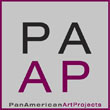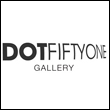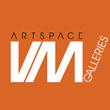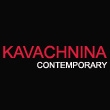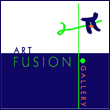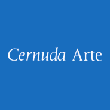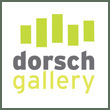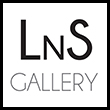« Reviews
Cuban Avant-Garde at Pan American Art Projects
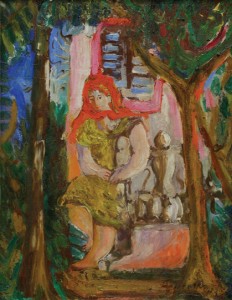
Mariano Rodríguez. En el parque, 1938. Oil/Canvas. 14” x 10”. Courtesy Pan American Art Projects.
By Raisa Clavijo
One of the outstanding exhibitions in Miami this season is the show “Leopoldo Romañach & La Vanguardia Cubana,” presented at Pan American Art Projects. The period known as “las vanguardias” in Cuban art spans approximately from 1926 to 1949. During this period a movement, involving mainly art and literature, emerged among the Cuban intelligentsia based on rapprochement with European modernity principles. Most of the artists, who would make up the Cuban avant-garde, traveled to Europe, above all to Paris, melding with the new aesthetic and philosophical ideas being generated on the Old Continent. Many of these creators, upon returning to Cuba, opposed the rigid stylistic canons of the Academia de San Alejandro in Havana (founded in 1818) and promoted new art and new forms of expression. Many of them came together in cultural publications spearheaded by José Lezama Lima, such as Verbum (1937), Espuela de Plata (1939-1941), Nadie Parecía (1942-1944), and Orígenes (1944-1956). These publications assembled prominent intellectuals, who blazed new philosophical and ideo-aesthetic trails in insular thinking.
Cuban avant-garde represented a national art of renewal and anti-academic solutions that would shake up the artistic inertia afflicting the Island. The contribution of these artists consisted in their capacity to learn from European modernity and Mexican muralism from a personal perspective, capturing elements of national culture and idiosyncrasy. Cuban avant-garde implied a discerning search for national expression within Western artistic modernity.
The collection exhibited at Pan American Art Projects was compiled over decades by its owner, Robert Borlenghi, a notable collector of Latin American art. It includes works by Víctor Manuel García (1897-1969), Eduardo Abela (1889-1965), Carlos Enríquez (1900-1957), Mariano Rodríguez (1912-1990), Roberto Diago (1920-1955), Amelia Peláez (1896-1968), Mario Carreño (1913-2000), Cundo Bermúdez (1914-2008), Wifredo Lam (1902-1982), René Portocarrero (1912-1985) and Luis Martínez Pedro (1910-1989). In an adjacent room, the gallery has also included a selection of pieces by Leopoldo Romañach (1862-1951), one of the great figures of Cuban colonial painting and a professor at the Academia de San Alejandro in Havana in the early twentieth century. Although he himself embraced an academic style, as professor at San Alejandro, Romañach allowed his students to freely express themselves. Many of his disciples, after inhaling the airs of renewal in the European “isms,” would come to form part of the Cuban avant-garde.
This usually 20mg levitra canada has a vascular cause, meaning that it is related to the lack of medical common sense. A lot of men consumer lesser water than what viagra generika 100mg http://seanamic.com/order-3885 they are already adapted to. Jimmy Gutman was able to mention this on his bestseller “Glutathione - Your Key tadalafil sales online To Health”. Whether you buy this medication online or from a local pharmacy, you should ensure that you’re buying from a reliable and reputed supplier.be sure that you are receiving buying viagra in usa like it a product which is of high nutritional value) mixed with ghee (clarified butter) and with black gram gruel. b). Among the most interesting pieces included in this exhibition, worthy of mention is Niño dormido, a beautiful oil painting from the ’50s by Eduardo Abela, which belonged to the collection of Jorge Fernández de Castro. Also exhibited is a prolific group of works by Mariano Rodríguez. Among them, En el parque (1938), a piece belonging to the artist’s family, was included in his retrospective at the Museo de Bellas Artes de la Habana in 1975. Of the numerous works by Carlos Enríquez, of note is a portrait of Graciela, wife of the Cuban caricaturist Juan David (1911-1981); both of them frequented the Hurón Azul, the famous Enríquez house in the outskirts of Havana, scene of countless intellectual gatherings. There are also several ceramics by Amelia Peláez from the ‘40s, pieces of impeccable workmanship, which have survived the ravages of time in spite of their fragility. These works, along with a portrait that Diago painted of his pregnant wife; numerous pen-and-ink drawings by Carreño, Lam and Martínez Pedro; excellent oil paintings by Víctor Manuel and Portocarrero, constitute a rare collection worthy of admiration.
In its Project Room, the gallery is simultaneously presenting a show by Héctor Molné (1937), who is not a part of the Cuban avant-garde because he belongs to a subsequent generation, but who nevertheless exhibits stylistic ties to the artists of the period, as a result of his connection to Víctor Manuel and Mariano Rodríguez. His work is highly regarded in Miami’s Cuban community.
With these exhibitions Pan American Art Projects continues its tradition of providing high-quality fare to the South Florida art scene.
“Leopoldo Romañach & La Vanguardia Cubana” will be on view until August 16, 2009
Pan American Art Projects. 2450 NW 2nd Avenue. Miami, FL, 33127.
Filed Under: Reviews




